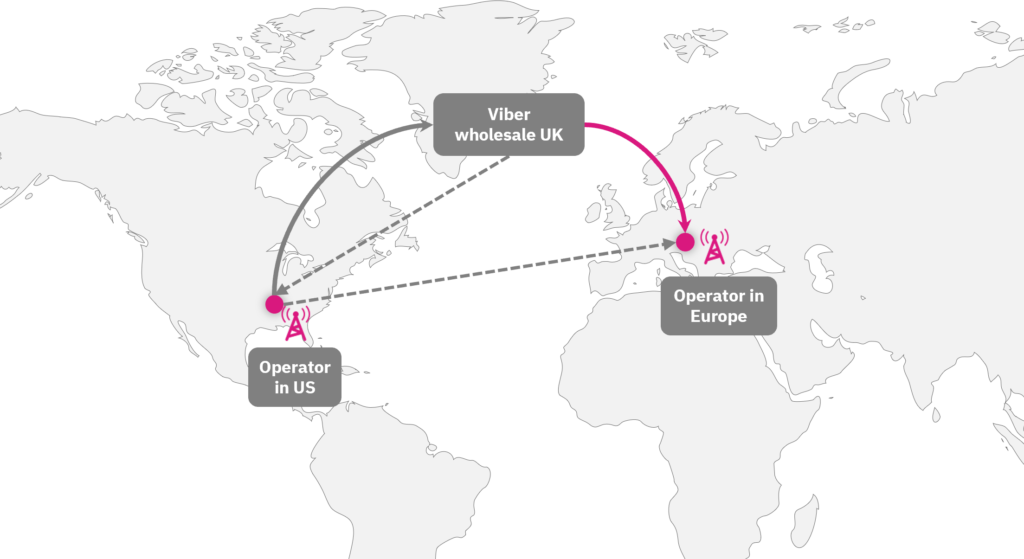Declining Voice Revenues? Check Your Network for OTT Bypass Fraud

OTT bypass fraud is striking another blow to already declining voice revenues. Sometimes completely unaware of the underlying current of OTT call termination, mobile network operators are left in the dark on how to secure revenue that is slipping through their fingers.
Sounds unlikely? This is normal as voice and messaging traffic migrate to over-the-top apps like Viber and WhatsApp, you might say. Let’s take a closer look. Yes, international and national voice traffic is in decline every quarter, and this is not necessarily fraud. But when voice calls are terminated via OTT apps to bypass international interconnect charges, a fraudulent revenue leakage occurs. When voice interconnect is bypassed, the terminating operator can only charge for local data usage or is left empty-handed if the call was terminated on an OTT app while on Wi-Fi.
Call Hijacking is the Prerequisite of OTT Bypass Fraud
It is a fact that OTT providers are terminating international voice calls directly to their apps. We call this phenomenon hijacking of international calls and it is an essential part of OTT bypassing. It means that originating international calls over legacy GSM networks are terminated to the operators over data infrastructure – and this is where the problem lies – free of charge.
Let’s look at an example of an OTT hijacking scenario between two operators:

A user from a mobile network operator in the US places a mobile call to a user on a network in Europe. The call is charged by the US operator as a regular international call. But the call is routed to Viber by the operator or an intermediate wholesale operator. Since Viber has real-time information on whether the subscriber is available and currently active, it can terminate the call to the European operator as a Viber app call. For calls terminated via OTT apps, the European operator does not receive any revenue. All the cost that the originating operator in the US paid to Viber stays with Viber as pure profit.
Inadequate Data Classification Capabilities Decrease Network Visibility
Data traffic requires profound probing in order to gain visibility beyond encryption and correctly classify traffic. As many operators have at their disposal only basic DPI capabilities, they can only scratch the surface of traffic classification by seeing only the total volume of data traffic per application.
Even those operators with embedded DPI that can perform charging based on classification have trouble with classifying OTT apps on anything other than their total volume of data used. Types of usage (either chat, video, file transfer etc.), whether the OTT voice call is fraudulent (OTT bypass), whether the OTT session/call is from on-net or off-net and similar data elude them.
Operators Most Prone to OTT Bypass Fraud
We find that certain circumstances make operators more exposed to OTT bypass fraud. Based on our testing of different markets, we detected rising levels of OTT bypass fraud with operators that implement origin-based charging and deal with interconnection rates above 0.05 $.
But as OTT providers are growing in market share further development of bypassing scenarios to traditional voice termination rates is expected.
The Solution? An Advanced Embedded DPI Technology
For efficient network visibility and combatting OTT bypass fraud an enhanced DPI-based technology is required. It provides much needed clarity and enables operators to detect and block OTT bypass fraud and hijacking of international voice traffic.
The ability to correlate DPI-based advanced analytics of data traffic and voice usage monitoring is paramount to better tracking of voice and data traffic on the network and ensuring that revenue leakage is prevented. This not only ensures a strategic capability operators can use to prevent OTT bypass fraud but also serves as a wide network overview of data traffic, its usage, and patterns.
The decline of voice revenues has long become a reality for mobile network operators. Thus, it is even more important to understand what fuels this decline in a granular fashion. A decrease in traffic originating from one country or operator could happen due to any number of potential reasons, such as traditional voice bypass fraud, OTT bypass fraud or simply because users are changing their behaviour when it comes to voice calls.
By taking a proactive approach to traffic classification operators can regain control over network processes that cause additional revenue leakage such as OTT bypass fraud. But the benefits do not stop there. By investing in overall data traffic classification capabilities and expert managed service operators secure actionable intelligence that enables them to break down, analyse and visualise data usage patterns. Which is where competitive advantage in today’s telecommunication market is built.
Read more on Mobik’s flagship products: OTT Guard and Data Guard.
